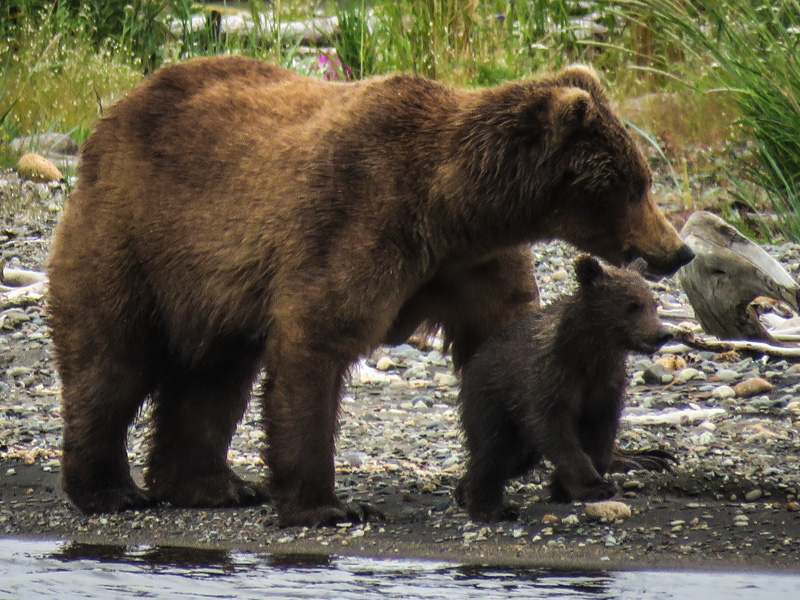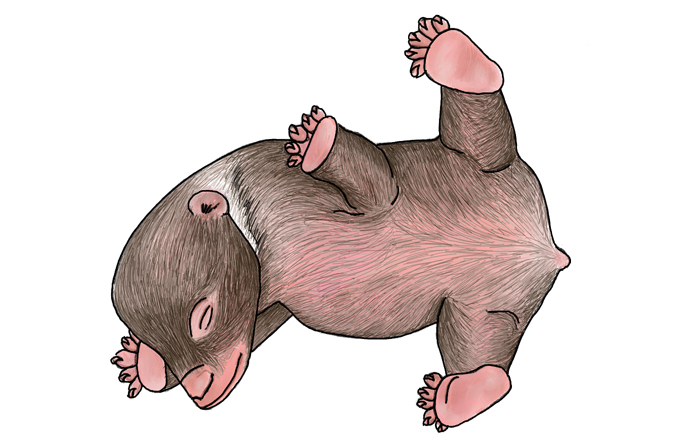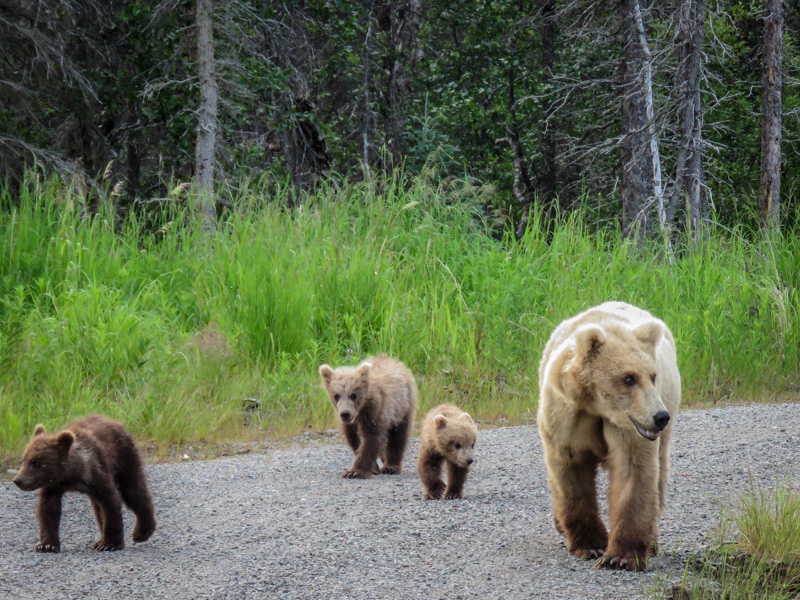
409 Beadnose and one of her COYs stand on the bank of Brooks River. Photo by NPS/Tammy Carmack.
The first spring cubs, or cubs of the year (COYs,) are showing up in Brooks Camp. So far, 409 Beadnose and 128 Grazer have appeared with litters of two and three, respectively. While waiting in anticipation for the arrival of spring cubs, some viewers and visitors may have been wondering, “what’s taking so long?”
Sows with COYs are generally the last bears to leave their dens. After emerging they tend to spend their first few weeks around the den site, allowing the COY to slowly explore their bright new world. Sows with spring cubs also, when possible, avoid visiting areas where other adult bears may be lurking; larger, more dominant boars and even sows have been known to prey on younger bears. The survival rate for COY’s is around 50%. However, newborn cub development and physiology has adapted in some interesting ways to help give our favorite furry critters a good shot at survival.
After giving birth in the depths of winter, usually during January or February, the sow and cub remain warm in their den for the next two to four months. At birth, a brown bear cub is incredibly small, weighing just one pound and measuring about 9 inches long. That same bear may multiply its weight well over 1,000 times from newborn to adult. Humans would weigh over 6,000 pounds if we shared the same weight increase.
 An illustration of a newborn cub.
An illustration of a newborn cub.
Nearly bald, completely blind, and extremely vulnerable, the newborn cub continues to develop in the den - its second womb. Its eyes will remain closed for nearly one month, though almost immediately after birth the newborn cub navigates its way to its mother’s teat, where it suckles on some of the most nutritious baby food on the planet. Bear milk contains roughly 35% fat and over 10% protein. In comparison, human milk contains about 3% fat and less than 1% protein.
The rich milk allows the cub to grow at an astonishing rate. A few months after birth, the cub emerges from the den weighing up to ten pounds. During their first year out of the den, fueled by its mother’s milk and whatever scraps of salmon it can scrounge, spring cubs can double their weight every two months. By the time they retire to the den with their mother at the end of fall, a healthy COY will weigh as much as eighty pounds.
Brown bears have developed these adaptations for one simple reason: it gives them the best chance at survival. While visitors, park staff and cam viewers patiently wait for the rest of this year’s spring cubs to arrive, newborn cubs are already hard at work putting on the weight and learning the skills necessary to grow into successful adult bears.

128 and her three COYs walk along the Valley Road. Photo by NPS/Tammy Carmack.
